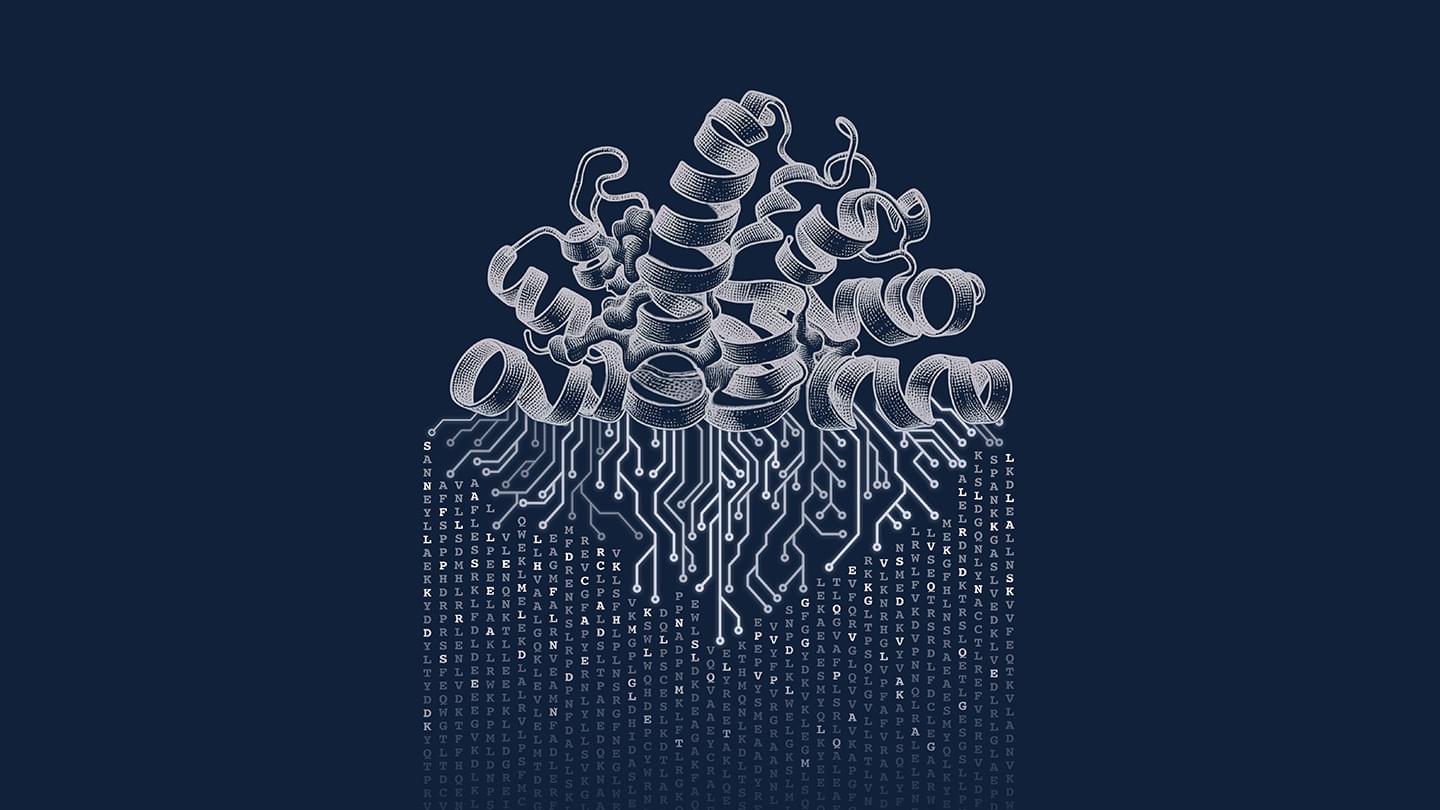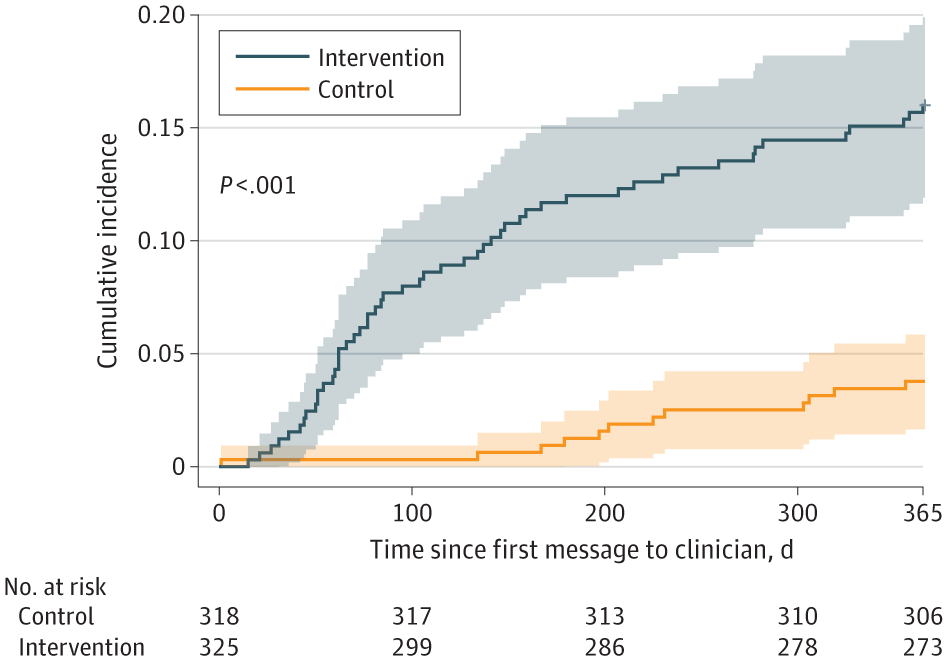A new set of artificial intelligence models could make protein sequencing even more powerful for better understanding cell biology and diseases.



Lei Xia et al. report on a B7H3-targeting radiotracer for PET imaging of various malignant tumors and for non-invasive screening of B7H3 expression:
The figure shows dynamic PET imaging of selected organs using the radiolabled 68Ga-B7H3-BCH probe.
1Key laboratory of Carcinogenesis and Translational Research (Ministry of Education), Beijing Key Laboratory of Research, Investigation and Evaluation of Radiopharmaceuticals, NMPA Key Laboratory for Research and Evaluation of Radiopharmaceuticals (National Medical Products Administration), Department of Nuclear Medicine, Peking University Cancer Hospital and Institute, Beijing, China and.
2Key Laboratory of Carcinogenesis and Translational Research (Ministry of Education, Beijing), Department of Pathology, Peking University Cancer Hospital and Institute, Beijing, China.
3Department of Nuclear Medicine, Affiliated Hospital of Zunyi Medical University, Zunyi, Guizhou, China.

The key to this development is an AI-powered streaming method. By decoding brain signals directly from the motor cortex – the brain’s speech control center – the AI synthesizes audible speech almost instantly.
“Our streaming approach brings the same rapid speech decoding capacity of devices like Alexa and Siri to neuroprostheses,” said Gopala Anumanchipalli, co-principal investigator of the study.
Anumanchipalli added, “Using a similar type of algorithm, we found that we could decode neural data and, for the first time, enable near-synchronous voice streaming. The result is more naturalistic, fluent speech synthesis.”

From JAMA Cardiol ogy: A centralized, population health coordinator-led notification and clinical support pathway improved the initiation of antihypertensive therapy in patients with left ventricular hypertrophy.
Despite the recognition that poorly controlled hypertension leads to adverse cardiovascular events, there are often barriers in care systems that contribute to substandard recognition and treatment.19 Notably, prior work employing trained nonphysicians focused on closing gaps in cardiovascular disease management has yielded significant improvements in disease-specific metrics using remote, centralized interventions.20-25 Similarly, there is a growing body of evidence demonstrating the effectiveness of clinician-directed support systems—often in the form of “nudges”—that have made meaningful advances in a variety of clinical outcomes.26,27 Whether a methodologic approach combining clinician nudges with the support of trained nonphysicians can be applied to LVH-associated diseases—including hypertension—is unknown.
Accordingly, the NOTIFY-LVH pragmatic randomized clinical trial28 sought to determine whether potentially underutilized echocardiogram data could be leveraged to improve patient care by augmenting the traditional ambulatory care framework. Specifically, this study tested whether a centralized clinical support pathway targeting clinicians of patients with LVH on their prior echocardiograms would increase the rate of treatment for hypertension and the earlier diagnosis of LVH-associated diseases.

Although lifespan has long been the focus of ageing research, the need to enhance healthspan — the fraction of life spent in good health — is a more pressing societal need. Caloric restriction improves healthspan across eukaryotes but is unrealistic as a societal intervention. Here, we describe the rewiring of a highly conserved nutrient sensing system to prevent senescence onset and declining fitness in budding yeast even when aged on an unrestricted high glucose diet. We show that AMPK activation can prevent the onset of senescence by activating two pathways that remove excess acetyl coenzyme A from the cytoplasm into the mitochondria — the glyoxylate cycle and the carnitine shuttle. However, AMPK represses fatty acid synthesis from acetyl coenzyme A, which is critical for normal cellular function and growth. AMPK activation therefore has positive and negative effects during ageing. Combining AMPK activation with a point mutation in fatty acid synthesis enzyme Acc1 that prevents inhibition by AMPK (the A2A mutant) allows cells to maintain fitness late in life without reducing the mortality associated with advanced age. Our research shows that ageing in yeast is not intrinsically associated with loss of fitness, and that metabolic re-engineering allows high fitness to be preserved to the end of life.
The authors have declared no competing interest.

Adeno-associated virus (AAV) is a prominent method for delivering genes in vivo. Therapeutic delivery to target cells is achieved through full capsids containing the gene cargo. However, the presence of empty capsids in the AAV drug product can reduce therapeutic effectiveness, necessitating their detection at various stages of the AAV production process. Traditional methods for assessing the AAV empty/full (E/F) ratio are often slow, labor-intensive, and require significant optimization.
Consider a novel, rapid, and high-throughput approach for determining the AAV E/F ratio using Octet® Biolayer Interferometry (BLI) alongside Octet® AAVX Biosensors. This cutting-edge technique evaluates intact viral capsids and is perfect for screening both crude and purified samples, offering a quicker and more efficient workflow with results available in as little as 30 minutes.
Discover the advantages of this innovative method and enhance your AAV workflow by downloading the technical note.

Keratinocytes produce collagen fibers, while deeper fibroblasts later modify the collagen fibers initially formed by keratinocytes. Challenging the long-standing belief that fibroblasts produce skin collagen, researchers at Okayama University have investigated collagen formation in the ‘glass-skinned’ amphibian axolotl and other vertebrates. They discovered that keratinocytes, the surface cells of the skin, are responsible for producing collagen, which is then transferred deeper to form the dermis. Later, fibroblasts migrate into this collagen layer, modifying and reinforcing its structure.
The skin consists of two primary layers. The epidermis, the outermost layer, is predominantly made up of keratinocytes, while the deeper dermis contains blood vessels, nerves, and structural proteins such as collagen, which give the skin its strength and texture. Traditionally, fibroblasts — specialized supporting cells within the dermis — have been believed to play a key role in producing collagen.
In humans, collagen is formed before and after birth. It has been believed that fibroblasts play an exclusive role in collagen production in the skin, and no keratinocytes contribute to collagen production. The statement “Collagen production in the human skin is achieved by fibroblasts” has been an unspoken agreement in the skin research field.

As scientists, we often think we understand a virus—its structure, its tricks, the way it moves through the body. But every once in a while, we stumble upon something unexpected—something that completely changes the way we see an infection.
I have spent years studying the molecular tactics of viruses—how they invade, replicate, and most intriguingly, how they evade our immune system. Some strategies are well documented: antigenic drift, glycan shielding, immune suppression. But every so often, we stumble upon a novel mechanism that redefines our understanding of viral pathogenesis.
A recent finding in Nature showed that the spike protein of SARS-CoV-2 binds with fibrinogen, leading to thrombo-inflammation. This raises a fundamental question: Why does the virus need to bind with fibrinogen? Could this interaction provide an evolutionary advantage to the virus? Could this be the reason behind post-COVID heart attack cases?

Parkinson’s disease (PD) is a progressive neurodegenerative disease that affects approximately 1% of people over the age of 60 and 5% of those over the age of 85. Current drugs for Parkinson’s disease mainly affect the symptoms and cannot stop its progression. Nanotechnology provides a solution to address some challenges in therapy, such as overcoming the blood-brain barrier (BBB), adverse pharmacokinetics, and the limited bioavailability of therapeutics. The reformulation of drugs into nanoparticles (NPs) can improve their biodistribution, protect them from degradation, reduce the required dose, and ensure target accumulation. Furthermore, appropriately designed nanoparticles enable the combination of diagnosis and therapy with a single nanoagent.
In recent years, gold nanoparticles (AuNPs) have been studied with increasing interest due to their intrinsic nanozyme activity. They can mimic the action of superoxide dismutase, catalase, and peroxidase. The use of 13-nm gold nanoparticles (CNM-Au8®) in bicarbonate solution is being studied as a potential treatment for Parkinson’s disease and other neurological illnesses. CNM-Au8® improves remyelination and motor functions in experimental animals.
Among the many techniques for nanoparticle synthesis, green synthesis is increasingly used due to its simplicity and therapeutic potential. Green synthesis relies on natural and environmentally friendly materials, such as plant extracts, to reduce metal ions and form nanoparticles. Moreover, the presence of bioactive plant compounds on their surface increases the therapeutic potential of these nanoparticles. The present article reviews the possibilities of nanoparticles obtained by green synthesis to combine the therapeutic effects of plant components with gold.